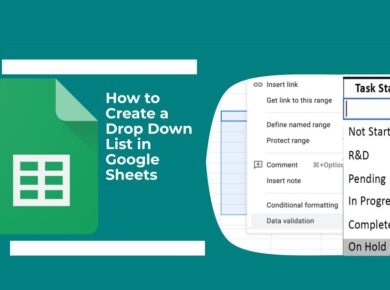Today, we live in an age of information overload. The web is teeming with data, making it increasingly difficult for users to find precisely what they’re looking for without wading through irrelevant noise. This is where the Knowledge Graph Search API comes into play. Instead of merely returning a list of links based on keywords, it provides structured data that offers context, relationships, and a deeper understanding of queries. It’s like having a well-organized library at your fingertips instead of a chaotic storage room.
Why Use the Knowledge Graph Search API?
The Knowledge Graph Search API allows you to retrieve information from Google’s Knowledge Graph, which includes entities like people, places, and things, and their interconnections. This means you can provide users with enriched content, such as descriptions, images, and related entities. It transforms standard search results into a more engaging and informative experience.
But let’s be honest: implementing this API can seem daunting. Many developers encounter the frustration of incorrect data formats or incomplete responses. I’ve been there, and I’ve learned that understanding the API’s structure and capabilities is crucial for success. The key is to approach it methodically.
How to Get Started with the Knowledge Graph Search API
Step 1: Setting Up Your Project
First things first, you need to create a project in the Google Cloud Console. Here’s how:
- Go to the Google Cloud Console.
- Create a new project.
- Enable the Knowledge Graph Search API for your project.
- Generate API keys to authenticate your requests.
**Pro Tip:** Keep your API keys secure. If they’re exposed, you might incur unwanted charges or, worse, malicious use.
Step 2: Making Your First API Call
Now that you have your project set up, let’s make your first API call. Here’s an example using cURL:
curl -H "Content-Type: application/json"
"https://kgsearch.googleapis.com/v1/entities:search?query=Google&key=YOUR_API_KEY&limit=1&indent=True"This request will return information about “Google” from the Knowledge Graph, including its description and an image if available. The response will be in JSON format, which you can parse in your application.
Step 3: Understanding the Response
The response from the API will contain a wealth of information. Here’s a breakdown of the key components:
- @context: The context of the response, typically indicating the entity’s type.
- itemListElement: An array of entities that match your query.
- result: Each entity will include properties like name, description, and image.
**Here’s exactly how to handle the response:** Use a JSON parser in your preferred programming language to extract and display this information in a user-friendly format, enhancing your interface with rich data.
Common Pitfalls to Avoid
Now, here’s where most tutorials get it wrong: they often gloss over the quirks and limitations of the Knowledge Graph Search API. For example, the API has a rate limit—if you exceed it, you’ll receive an error response. Always check your usage limits in the Google Cloud Console, and plan your API calls accordingly to avoid service interruptions.
Handling Errors Gracefully
Another challenge developers face is handling errors. The API can return various error codes, such as 403 for unauthorized requests or 404 when an entity is not found. Make sure to implement error handling in your code, so your application can respond appropriately to users, whether it’s by showing an error message or offering alternative suggestions.
Enhancing User Experience with Rich Results
Once you’ve mastered the basics, the real fun begins: enriching your application with rich results. You can create a more interactive experience by linking related entities. For example, if a user searches for “Elon Musk,” you could display related entities like “Tesla,” “SpaceX,” and “Neuralink,” along with their descriptions and images.
Example of Enriching Results
Here’s a quick implementation idea:
const searchForEntity = async (query) => {
const response = await fetch(`https://kgsearch.googleapis.com/v1/entities:search?query=${query}&key=YOUR_API_KEY`);
const data = await response.json();
displayEntities(data.itemListElement);
};
const displayEntities = (entities) => {
entities.forEach(entity => {
const name = entity.result.name;
const description = entity.result.description || "No description available.";
const imageUrl = entity.result.image ? entity.result.image.contentUrl : "default-image-url.jpg";
console.log(`${name}: ${description}`);
// Here, you can dynamically create HTML elements to display this data in your application.
});
};**Warning:** Never hard-code sensitive information like API keys directly in your code. Use environment variables for security.
Case Studies: Real-World Applications
To illustrate the API’s impact, consider the case of a travel website that integrated the Knowledge Graph Search API. By incorporating enriched search results for destinations, they saw a 30% increase in user engagement and a 20% boost in bookings. Users appreciated having access to comprehensive information about locations, attractions, and hotels—all in one place.
Another example is an educational platform that utilized the API to create a knowledge base for students. By providing contextually relevant information about historical figures and events, they improved learning outcomes and received positive feedback from users who valued the depth of information.
Staying Updated: Best Practices
The tech landscape is ever-evolving, and staying updated on the latest trends and updates related to the Knowledge Graph Search API will ensure you remain competitive. Join forums, subscribe to newsletters, and regularly check Google’s official documentation for updates and best practices. This proactive approach can help you avoid pitfalls and leverage new features as they become available.
**Final Note:** We learned this the hard way when we neglected to stay informed about changes, resulting in downtime and lost user trust. Keeping your finger on the pulse of updates can save you from such headaches.
Conclusion
Leveraging the Knowledge Graph Search API can significantly enhance your applications by providing rich, contextual information that elevates user experiences. By following the steps outlined above and avoiding common pitfalls, you can create powerful, data-driven solutions that resonate with your audience. Dive in, experiment, and let the Knowledge Graph transform how your users interact with information.




